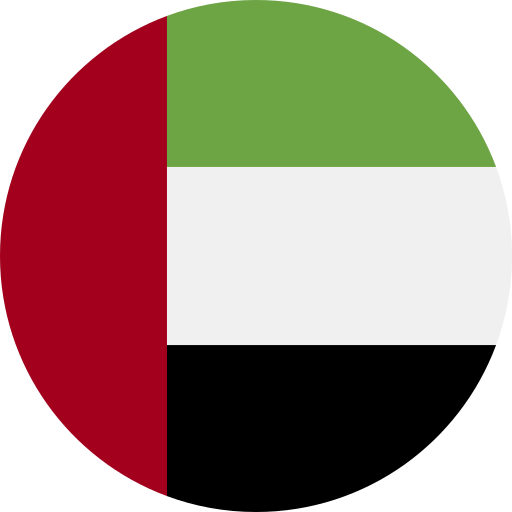Key Takeaways
- Significant Population: Arabic boasts over 400 million speakers globally, predominantly in the Middle East and North Africa (MENA), highlighting its cultural richness and market potential.
- Youthful Demographics: Approximately 50% of Arabic speakers are under 25 years old, suggesting opportunities for targeted content towards younger audiences in media, entertainment, and education.
- Diverse Dialects: The Arabic language encompasses a variety of dialects that can affect communication; businesses must tailor their messaging to accommodate these linguistic differences for effective engagement.
- Socioeconomic Insights: Education levels are improving across many MENA countries, with rising literacy rates. However, employment trends show challenges for young adults seeking careers in competitive sectors like technology and finance.
- Cultural Sensitivities: Understanding societal issues such as gender dynamics is crucial when creating marketing strategies or voiceover projects aimed at Arabic-speaking communities to ensure messages resonate authentically.
- Global Opportunities: The increasing presence of Arabic speakers worldwide presents significant opportunities for businesses looking to expand market reach or engage diverse audiences effectively.
Did you know that Arabic is one of the fastest-growing languages in the world? With over 400 million speakers, the population of Arabic speakers is not just a statistic; it represents a rich tapestry of cultures and histories. As global communication increases, understanding this demographic becomes crucial for businesses, educators, and travelers alike.
So why should you care about the population of Arabic speakers? Whether you’re looking to expand your market reach or simply want to connect with diverse communities, grasping the significance of this language can unlock countless opportunities. Dive into this article as we explore fascinating insights about Arabic speakers and their impact on our interconnected world.
Overview Of Arabic Speakers
Arabic is a vibrant and widely spoken language, with over 400 million speakers globally. This diverse population spans across various regions, including the Middle East and North Africa. The Arabic-speaking community showcases rich cultural traditions, histories, and dialects.
Understanding the demographics of Arabic speakers is crucial for businesses targeting these markets. For instance, recognizing the nuances in dialects can enhance communication effectiveness. Different regions have unique variations that can influence marketing strategies or educational content.
Arabic’s growth isn’t just numerical; it’s also about cultural impact. With many Arabic speakers engaging in global industries such as media and entertainment, the demand for skilled voiceover talent has risen significantly. Voice artists proficient in Arabic can connect deeply with audiences by delivering messages that resonate on multiple levels.
In today’s interconnected world, tapping into this demographic opens doors to new opportunities. Whether you’re looking to expand your market presence or create engaging content tailored for Arabic audiences, understanding their language preferences proves invaluable.
Global Distribution
Arabic speakers are spread across various regions, contributing to a rich tapestry of cultures and communities. Understanding where these speakers reside can enhance opportunities for engagement and connection.
Regions With High Populations
Middle East and North Africa (MENA) dominate as the primary regions with significant Arabic-speaking populations. Countries like Egypt, Saudi Arabia, and Iraq boast millions of native speakers. Additionally, countries such as Algeria, Sudan, and Morocco contribute to this linguistic diversity. Beyond MENA, you’ll find sizable Arabic-speaking communities in Western Europe and North America due to migration patterns.
Countries With Notable Arabic Speakers
Several countries stand out for their notable Arabic speaker populations:
| Country | Approximate Population of Arabic Speakers |
|---|---|
| Egypt | 100 million |
| Algeria | 44 million |
| Sudan | 40 million |
| Iraq | 30 million |
| Saudi Arabia | 34 million |
These figures illustrate the vast potential for engaging with diverse audiences speaking various dialects. Recognizing these demographics is crucial for anyone looking to connect authentically with Arabic-speaking markets or create tailored content that resonates deeply.
Demographic Insights
Understanding the demographics of Arabic speakers offers valuable insights into their rich cultural tapestry and market potential. With over 400 million speakers, this population spans diverse backgrounds across the Middle East and North Africa (MENA) regions.
Age Distribution
The age distribution among Arabic speakers showcases a youthful demographic. Approximately 50% of the population is under 25 years old, presenting opportunities for engaging content aimed at younger audiences. This age group often seeks fresh perspectives in media, entertainment, and education. Additionally, about 30% fall within the 25-54 age range, representing a significant segment that actively participates in professional fields and consumer markets. Tailoring voiceover projects to resonate with these distinct age groups fosters deeper connections.
Gender Ratios
Gender ratios among Arabic speakers reflect a balanced representation but vary by region. Generally, there’s an even split between male and female speakers; however, cultural factors can influence participation in certain sectors. For instance, while women play vital roles in education and healthcare, men dominate industries like construction and engineering. When creating voiceover content tailored for this audience, considering gender dynamics helps ensure messages resonate effectively with both sides.
By tapping into these demographic insights, you can create targeted marketing strategies or compelling voiceover projects that engage your audience meaningfully and authentically.
Socioeconomic Aspects
Understanding the socioeconomic aspects of Arabic speakers provides valuable insights for engaging with this diverse demographic. Education and employment trends are crucial in shaping their economic landscape.
Education Levels
Education levels among Arabic speakers vary significantly across regions. Many countries in the MENA region have made strides in improving access to education, leading to a rising number of graduates, particularly among younger generations. For instance, literacy rates have reached approximately 90% in several Gulf states like Qatar and UAE. In contrast, some areas still face challenges, impacting educational attainment. As you consider marketing strategies or voiceover projects aimed at Arabic-speaking audiences, recognizing these differences can guide your approach effectively.
Employment Trends
Employment trends reveal a dynamic job market within Arabic-speaking populations. Many young adults pursue careers in technology, finance, and media sectors—fields that often seek skilled voice talent for various projects. With an increasing emphasis on digital content consumption, there’s a growing demand for voice actors who can deliver relatable and engaging performances tailored to local dialects and cultures. Understanding these employment patterns allows you to align your offerings with the evolving needs of the market while ensuring authenticity resonates with your target audience.
By grasping these socioeconomic factors, you position yourself strategically when creating content or hiring voice artists that connect meaningfully with Arabic-speaking communities.
Challenges Faced By Arabic Speakers
Arabic speakers encounter several challenges that affect communication and cultural exchange. Understanding these hurdles is vital for effectively engaging with this diverse group.
Linguistic Diversity
The Arabic language encompasses numerous dialects, each varying significantly in pronunciation, vocabulary, and grammar. This linguistic diversity creates barriers for Arabic speakers when interacting across regions or countries. For instance, a speaker from Egypt might struggle to understand someone from the Gulf region due to distinct dialectal differences. Businesses aiming to connect with Arabic-speaking audiences must recognize these variations and adapt their messaging accordingly. Tailoring content can enhance clarity and resonate more deeply with different communities.
Societal Issues
Arabic speakers often navigate societal challenges that influence their daily lives. Factors like economic opportunities, educational access, and cultural perceptions can create obstacles in various settings. Many young adults face tough job markets despite being well-educated; they seek roles in technology, media, or finance but may hit roadblocks due to regional disparities. Furthermore, gender dynamics play a role in participation across sectors—understanding these social structures is crucial for fostering inclusive environments where everyone can thrive.
In addition to these issues, the demand for skilled professionals in areas such as voice talent continues to rise within the industry. As businesses expand into MENA markets or aim for global reach, recognizing cultural sensitivities becomes essential for successful collaboration with local voice actors or artists who represent authentic perspectives.
By addressing both linguistic diversity and societal issues faced by Arabic speakers, you position your projects for greater success when creating engaging content tailored specifically for this vibrant demographic.
Conclusion
Understanding the Arabic-speaking population opens doors to countless opportunities. With over 400 million speakers and a rich cultural tapestry, engaging with this demographic can significantly enhance your outreach efforts. Recognizing the diversity of dialects and regional nuances is essential for effective communication.
As you navigate this vibrant landscape, consider the unique socioeconomic trends shaping Arabic speakers’ lives today. By tailoring your strategies to meet their needs, you’ll foster meaningful connections that resonate deeply with diverse audiences. Embracing these insights not only enriches your understanding but also positions you to thrive in a global market increasingly influenced by Arabic culture and talent.
Frequently Asked Questions
What is the significance of the Arabic language today?
The Arabic language has over 400 million speakers, making it vital for businesses, educators, and travelers. Understanding this demographic opens opportunities for market expansion and community connections across diverse cultures in the MENA region.
Where are most Arabic speakers located?
Arabic speakers are primarily found in MENA countries like Egypt, Saudi Arabia, and Iraq. Significant populations also exist in Algeria, Sudan, Morocco, Western Europe, and North America due to migration patterns.
How does age distribution affect marketing strategies in Arabic-speaking regions?
About 50% of Arabic speakers are under 25 years old. This youthful demographic presents unique opportunities for engaging content that resonates with younger audiences while targeting professionals aged 25-54 is crucial for consumer markets.
What challenges do businesses face when communicating with Arabic speakers?
Businesses encounter communication barriers due to numerous dialects within the Arabic language. Tailoring messaging to different communities is essential to foster effective communication and resonate authentically with various audiences.
How do education levels impact employment trends among Arabic speakers?
Education levels vary across regions but have improved significantly in many MENA countries. Higher literacy rates lead to a growing number of young adults pursuing careers in technology, finance, and media, increasing demand for skilled talent.
Why is understanding gender dynamics important when engaging with Arab demographics?
Gender ratios among Arabic speakers vary by region and influence participation in different sectors. Recognizing these dynamics helps businesses create inclusive environments that address specific needs within their target audience effectively.
What role does cultural understanding play in marketing strategies aimed at Arabs?
Cultural context enhances marketing effectiveness by ensuring messages resonate deeply with local values and customs. Understanding cultural nuances allows brands to connect authentically with their audience while respecting diversity within the Arab community.







